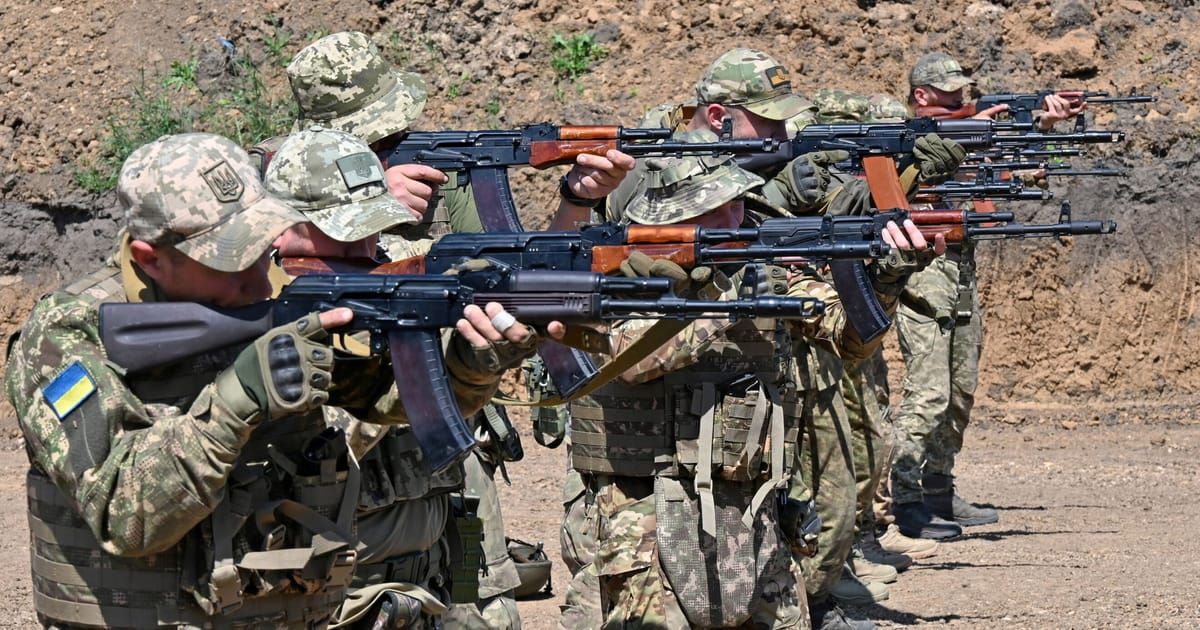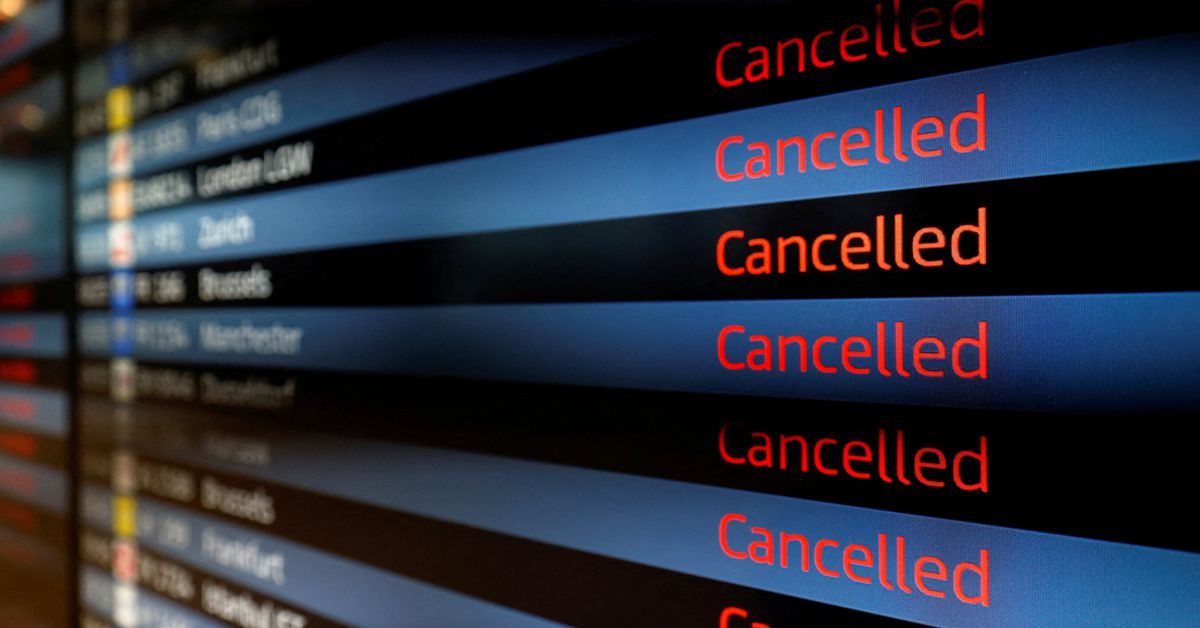This is Ukraine’s D-Day
Jamie Dettmer is opinion editor at POLITICO Europe.
Ukraine is on the cusp of what may well prove to be one of the two key battles of the war that was unleashed on it by Russia.
The first was Ukraine’s successful defense of Kyiv over a year ago. Russia had a plan, but it was badly executed — Ukraine didn’t have much of one and, greatly assisted by Western-supplied Javelin and NLAW anti-tank missiles, winged it. Eventually, Russia’s overly cocky and poorly commanded forces were outmaneuvered by the agility, bravery and improvisational skills of Ukraine’s forces.
We are now likely in the opening gambits of the second crucial battle, as Ukraine’s much anticipated counteroffensive in the east of the country appears imminent — if not already underway. However, officials in Kyiv still worry about whether they’ve enough of all they need to strike hard and deep.
We are now on the brink of the second crucial battle, as Ukraine’s much anticipated counteroffensive in the east of the country appears imminent. However, officials in Kyiv still worry about whether they’ve enough of all they need to strike hard and deep.
Speaking at the weekend, the deputy head of Ukrainian President Volodymyr Zelenskyy’s office Ihor Zhovkva told the Sunday Times, “if you want to start a successful counter-offensive you need everything at your disposal, including artillery, armoured vehicles and tanks, so probably we don’t have enough.”
Nonetheless, Zelenskyy himself said Friday that he was now ready to launch the counteroffensive, but he also sought to temper expectations, saying the battlefield struggle ahead would take some time and come at heavy cost. And to some eyes, the opening moves appeared to be starting as this article was written.
The Ukrainian leader must feel akin to former United States President Dwight Eisenhower on the eve of D-Day. “The eyes of the world are upon you,” Eisenhower wrote in a famous letter sent to troops before the assault. “We will accept nothing less than full victory! Good Luck!” But he also drafted another in case of failure, preemptively writing, “The troops, the air and the Navy did all that Bravery and devotion to duty could do. If any blame or fault attaches to the attempt it is mine alone.” The letter never had to be sent.
Today, on the eve of battle, 79 years on from when Eisenhower drafted his D-Day messages, Ukraine and Russia are both still doing all they can to disrupt and deceive each other, with drone and missile strikes on both military and civilian targets.
Russia’s relentless aerial attacks on Kyiv over the last four weeks — involving 400 Iranian Shahed drones and 114 cruise missiles — have been aimed at trying to psych Ukrainians out. Shifting away from targeting the country’s energy grid, Russia’s been focused on Ukrainian command, as well as their decision-making centers and logistical hubs, and on Sunday, Russian missiles struck an air force base in central Ukraine.
“Their primary goal is to stop our counteroffensive,” Ukraine’s Deputy Defense Minister Volodymyr Havrylov told a security conference in Singapore.
The eyes of the world are on Ukrainian President Volodymyr Zelenskyy | Sergei Supinsky/AFP via Getty Images
Likewise, Ukraine has been doing its utmost to cause disorder and to disturb its foes not only with drones and shelling but also with increasingly audacious sabotage missions — both behind enemy lines in occupied Ukraine and inside Russia — deploying apparently covert agents and Russian rebels grouped together in the Freedom of Russia Legion and the Russian Volunteer Corps.
These incursions in the Belgorod region on the border with Ukraine are showing just how vulnerable Russia’s borders are. But along with the cross-border shelling that’s seen Shebekino and Volokonovksky hit with hundreds of artillery rounds in recent days, they also have a dual function: Bringing the war home to the Russians — much as the recent drone attacks on Moscow have been doing — while potentially also cajoling Russia into moving some troops deployed along the front lines in order to contain the long-awaited counteroffensive.
The fighting in Belgorod is aggravating the political infighting in Russia as well, with Yevgeny Prigozhin — the murderous leader of the Wagner paramilitary group — announcing Saturday he was ready to send his mercenaries to defend the border region. “If the Ministry of Defense does not stop what is happening in the Belgorod region […] where Russian territory is, in fact, being captured, then obviously we will arrive,” he said in an audio message. Prigozhin added that he wouldn’t wait for official authorization, stating, “the only thing we’ll be asking for is ammunition, so that we don’t arrive, as we say back home, bare arsed in the cold.”
These incursions, which Kyiv denies having any hand in, are a mocking echo of Russia’s supposedly deniable “little green men,” deployed in Crimea and the Donbas in 2014 to spearhead annexation and land grab. But, ultimately, much like the drone attacks, missile strikes and artillery bombardments conducted by both sides, they are mere sideshows — albeit important ones if they manage to trick Russia into looking the wrong way and misjudging where the counteroffensive’s main thrust will come from.
And that’s a question Ukraine’s doing its best to avoid answering ahead of the guns roaring.
On Sunday, Ukraine’s military doubled down on its plea for operational silence regarding the counteroffensive, urging the public not to speculate about the assault or share any images that could give the game away. “Plans love silence,” the defense ministry said in a video posted to its social media channels, featuring masked troops holding their fingers against their lips. However, officials themselves have stoked speculation with their recent efforts to taunt Russia, posting a video showing troops preparing for battle and chanting a blessing and a promise just last week.
Still, there’s little secret to the broad options — as Russians can read maps too.
Undoubtedly, the biggest possible surprise would come if Ukraine were to launch its major thrust in the northeastern oblast of Kharkiv, where Russian defenses collapsed last fall, in the face of an unexpected attack that even Ukrainian ground commanders weren’t informed of until the eve of assault. The aim of such a strike here would be to drive deep into Luhansk, force Russia out of Severodonetsk and threaten Bakhmut.
Pushing into Donetsk would also be an option for Ukraine, but the attack with the biggest potential payoff would be through Zaporizhia and Kherson, pushing toward Mariupol, Berdiansk, Melitopol and Tokmak, with the aim of severing the so-called land bridge connecting mainland Russia and the southern Ukrainian territories that Russia occupies via the Crimean isthmus.
And this is where most seasoned military observers expect an attack to be focused — as do map-reading Russians, apparently. According to open-source satellite imagery and Ukrainian field commanders who spoke with POLITICO, in recent weeks, Russian forces have been fortifying Zaporizhzhia oblast and building up a series of defense lines — they’ve also been shoring up defenses in northern Crimea for months.
But as Britain’s Royal United Services Institute noted in a recent report, this could cause problems for Ukraine: “Engineering has proven to be one of the strongest branches of the Russian military,” the report said. “The defenses now constructed, consisting of complex obstacles and field fortifications, will pose a major tactical challenge to Ukrainian offensive operations.”
Thus, Ukraine’s now pinning some of its hopes on signs that Russia’s running low on artillery shells; and it also believes it can exploit Russia’s low morale and poor command coordination.
Meanwhile, Ukraine’s asking questions of itself too: Will it be able to pull off a truly coordinated combined arms warfare and avoid being too sequential or plodding as it sometimes has in the past? When facing stout resistance, can it continue to push on and not hesitate? And, above all, have Ukrainian forces trained enough with the new Western-supplied tanks, armored vehicles and other equipment they only recently got?
In his message, hours before D-Day, Eisenhower noted: “The tide has turned! The free men of the world are marching together to Victory!” And this, now, is Ukraine’s D-Day.
Source: POLITICO Europe


